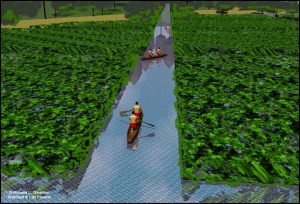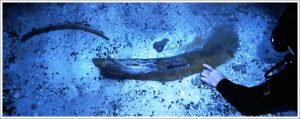The Architecture of Fort Center Archaeological Site
The Fort Center Mounds archaeological site was the first ancient Native American community near Lake Okeechobee to be studied thoroughly by contemporary, professional archaeologists. It was the last major archaeological project for Archaeologist, William Sears. ((Memorial for William Hulse Sears (1909-1996) Society for American Archaeology.)) For at least two decades, many of Sears’ peers dismissed his interpretation of the site as being “off the wall” and considered him a kook. However, in recent decades work by other archeologists have confirmed his interpretation and pushed back the occupation of Fort Center even further.
One of the most unusual examples of Native American architecture ever created was a mortuary complex at Fort Center, constructed around 200 AD. From the complexity and uniqueness of the complex, it is clear that it was “designed” and built according to the plans. The temple compound included a chevron-shaped earthen berm with rounded ends, a terrace for elite residences, a pond, a “sacred garden” for growing corn, a wooden platform for funerals, a conical mound veneered with shells imported from the coast, and a mortuary temple for cremating human remains.






